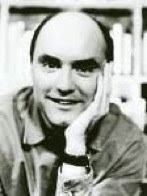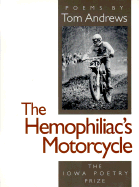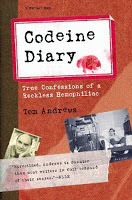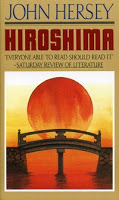The Hemophiliac’s Motorcycle

April is National Poetry Month, and it’s time to recognize one of the bleeding disorder community’s top poets: Tom Andrews. Tom passed away in 2001, at age 40, of complications of a blood disease, but also had hemophilia. His poetry reflected the pain he often felt due to his disorder—he won several awards for his poetry.
Tom grew up in Charleston, West Virginia, and seemed destined for fame. He was recognized in the Guinness World Book of Records for clapping for fourteen hours and thirty-one minutes—at age 11! He wanted to be a stand-up comedian. And he raced in motocross as a teen, but that ended wjhen he learned he had hemophilia following an accident.
He was a man of many talents: comedian, daredevil, copy editor for Mathematical Review, a journal for mathematicians, physicists, statisticians, etc. Talk about right brain and left brain!
But he is best remembered for his poetry. I had the deep pleasure of meeting Tom, and sharing correspondence with him for a time. He sent me several copies of his work, include Codeine Diary: True Confessions of a Reckless Hemophiliac (Little, Brown, 1998), a memoir.
In an online bio of Tom, his work is described here: “In this second wise and passionate book, Tom Andrews explores illness as a major theme, avoiding sentimentality without being merely confessional. He advances his considerable talent with great strength and forcefulness. The poems are buoyant with humor and mindful of larger mysteries even as they investigate very personal issues. There is an urgency that is compelling; the work is immersed in the private grief of the speaker without excluding the reader. There is real and hard-won wisdom and intelligence in the poems, offering genuine surprises and delight; their attractive humility is not a pose.”*
A man who knew suffering, but was not afraid to embrace the world, and reveal his soul. Isn’t thay the essence of beautiful poetry?
Here is an exceprt from The Hemophiliac’s Motorcycle:
… may [the Lord] adore each moment alive in the whirring world,
As now sitting up in this hospital bed brings a bright gladness of the human body, membrane of web and dew
I want to hymn and bide by, splendor of tissue, splendor of cartilage and bone,
Splendor of tail-like spine’s desire to stretch as it fills with blood
After a mundane backward plunge on an iced sidewalk in Ann Arbor,
Splendor of fibrinogen and cryoprecipitate, loosening the blood pooled in the stiffened joints
So I can sit up, of sit up in radiance, like speech after eight weeks of silence,
And listen for Him in the blood-rush and clairvoyance of the healing body…
It’s National Poetry Month. Read some. It’s good for your mind and soul!





